Digitisation is transforming how services are delivered to residents in social housing. It represents both the greatest challenges and the biggest opportunities in the history of the sector and requires a top down holistic approach with cultural change. But how far have we come already, and what does the future look like as we move towards the ‘digital tenant’?
The speed of change is gaining momentum with market factors affecting the need to drive efficiencies. Much has been written about the Welfare Reform and Work Bill which sets out that housing association rents are to be reduced 1% per year for four years starting April 2016. Housing associations are working towards cutting costs in line with this to counteract the loss in rental income, and are looking to technology to bring about those efficiencies the fastest way possible.
We are now entering the next phase of social housing where the digital tenant is becoming a reality as the sector increasingly digitises. The Government is also driving digital adoption – 80% of applications for Universal Credit must be made online by 2017, and it aims to cut the number of citizens who are still offline by 25% every two years until the population is connected. Similarly housing associations themselves are setting up schemes where they provide the internet to communities in order to increase digital adoption. It’s these factors in tandem that are contributing to the implementation of technology and ultimately the changes to the social housing sector.
Let’s also not forget that the tenants are changing too. We’ve read a lot about the generation known as millennials, digital natives, or generation Y: those born after 1980, and how they differ from previous generations. And the next succession, ‘generation Z’ who want information instantly and prefer to order, transact and get a response from a company without speaking to anyone or physically touching any paper. All of the above are of course digitally savvy, own smartphones and tablets and use social media almost ubiquitously. They have high expectations that technology can provide the benefits associated with creating an easier life for them. But they’re not totally alone – our older generations are also increasingly more digital – perhaps being driven to communicate with their children and grandchildren in the way that they demand, and owning smartphones and using computers for online banking and shopping. All of this means that for housing associations they have an unprecedented opportunity to engage with tenants and to deliver a more inclusive, efficient and cost effective service to them.
What is the digital tenant?
A true digital tenant should interact with the housing association via several channels: online via a customer portal accessed on a desktop or tablet computer, via web chat, and by email as well as WhatsApp or SMS on a smartphone. They are truly multichannel, but generally prefer non-verbal communication – especially for everyday requests. They should also be able to log repairs, antisocial behaviour, and complaints with the association online, update all their personal information, make rental payments and raise basic requests digitally: in a nutshell, do everything for themselves online, that a call centre agent would do if they called customer services.
A number of our clients who are MIS ActiveH users have made great strides when it comes to offering the multi-channel approach. Orbit has set itself clear targets and has already introduced its customer portal, online repair appointments, web chat, email, and SMS.
Others are not far behind with over 80% of our customer base currently looking to expand their channels. The move towards becoming a true digital tenant has certainly begun in earnest.
How far have we come?
Many housing associations are beginning to set deadlines for when they will interact with their tenants via digital means, and this can be a double-edged sword. To stipulate that by 2020, for example, all rental and maintenance requests will be handled via a customer portal, drives use and adoption of their technology by tenants, but doesn’t necessarily ensure engagement enough to return to that portal a second time without calling customer services in the first instance. This is more the ‘stick’ than the ‘carrot’ method of engagement and doesn’t always result in digital success.
Some housing associations have come further than others in terms of the technology they’ve already implemented to bring themselves a step closer to digitisation. Those who are the most innovative are probably about 60% of the way there, having implemented portal technology, mobilised their workforce and with the help of SMS messages and mobile CRM software, are communicating clearly with tenants.
Mobile CRM has been and continues to be a big driver of digitisation by housing associations as it empowers housing officers to spend less time updating paper records, and get back out into the community where they can add value face to face. We’ve seen around 25% of our existing client base move towards mobile CRM in the first twelve months of its release for the efficiencies they know it can bring them alone. Armed with a tablet computer and a smart phone, the technology provides the officers a way to access information back at base online or offline, update information whilst out in the field and also provide tenants with the answers to any questions they may have – even if it’s not their area of expertise or their department. These represent real efficiencies and are often at the centre of making a leap towards digitisation.
We have seen first-hand the impact Mobile CRM is having on customer service at Accent. They have gradually rolled out ActiveH CRM across the business and identified efficiencies in the process.
Accent’s internal employee survey on mobile working identified that 68% of staff think they’ve been able to visit more residents face to face, 54% believe rent arrears have been reduced and 76% believe customer service has improved. The vast majority considers that mobile working has improved the quality of their own working lives too.
The Future
In the future, many more housing associations will offer the digital tenant the ability to make appointments online for repairs, dealing directly with a maintenance company on some of the more common problems.
‘Appointing online’ is the next wave of digitisation to reach the sector and has already been rolled out at Orbit, once again increasing efficiencies for the association whilst delivering faster customer service for the tenant. There are many more pilot projects underway as this underpins the next wave in housing technology.
And beyond that? Well, we’ll have to wait and see, but virtual reality provides exciting possibilities. The next step is reducing home visits with remote monitoring devices (Internet of Things) or virtual visits through on-screen face-to-face chats. And who knows, looking further ahead maybe even augmented reality devices could assist the tenant with repairs diagnostics or even doing their own minor repairs.
Get in touch to learn more.
Sign up to our newsletter
Sign up today for hints, tips and the latest product news.



